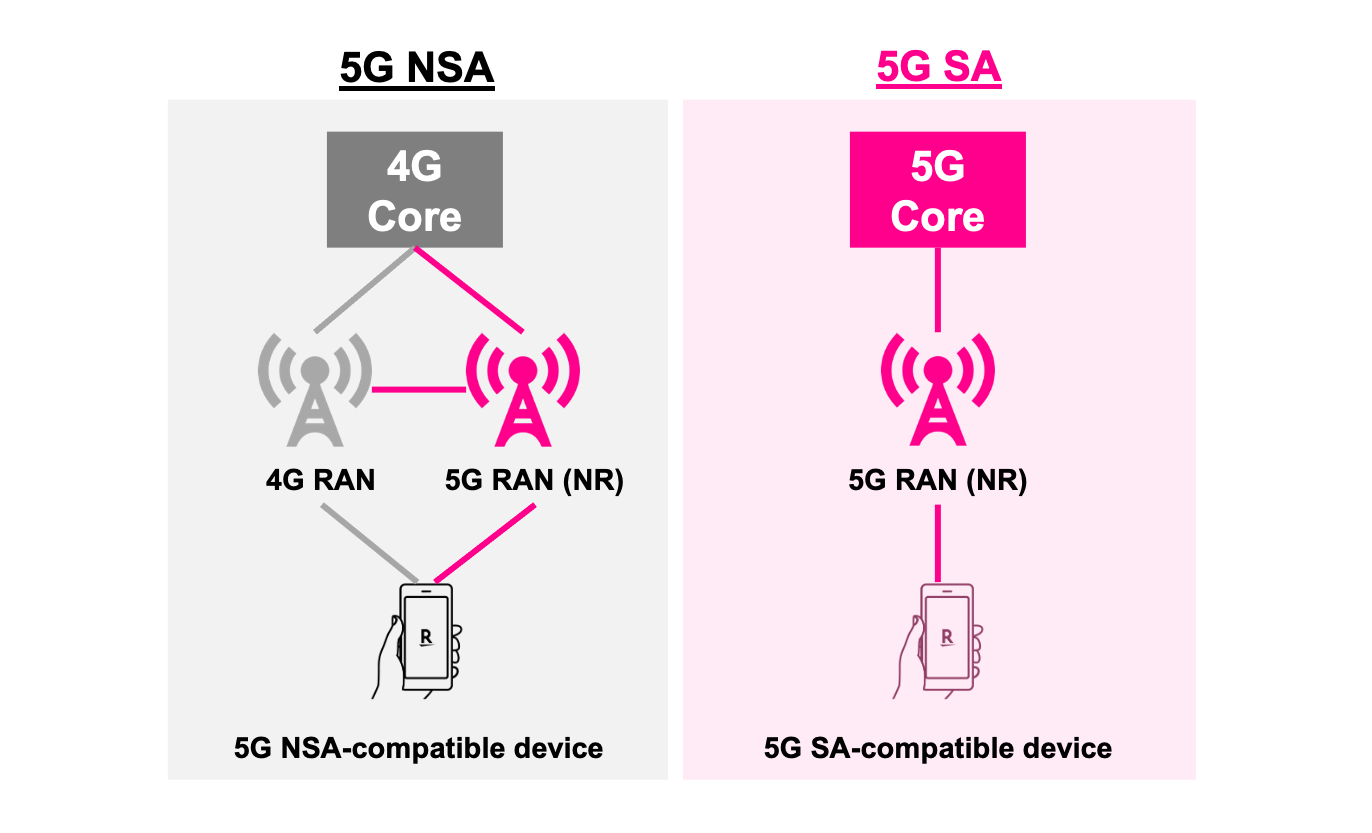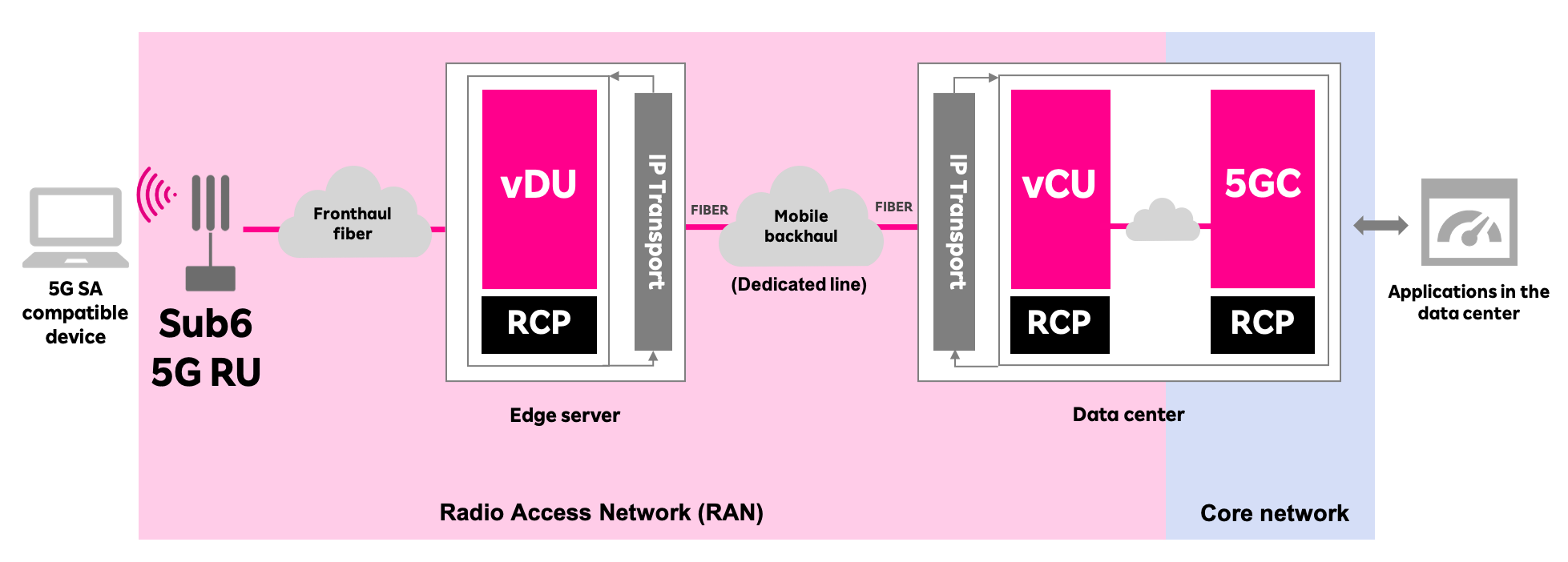Rakuten Mobile Successfully Verifies Data Transfer on 5G Standalone Mobile Network
Tokyo, July 12, 2021 - Rakuten Mobile, Inc. today announced that it has successfully verified data transfer on a 5G Standalone (SA) mobile network with the collaboration of Tokyo Institute of Technology (Tokyo Tech) on July 4, 2021, at Tokyo Tech’s Ookayama Campus.
In 5G SA networks, 5G technology is used throughout the network, from the radio access network (RAN) to the core network. 5G SA is expected to enable operators to leverage the high capacity and high speed, low latency and massive multi-connectivity of 5G. In addition, advanced network control allows for end-to-end network slicing which will enable operators to provide services that are optimized for a wide variety of network uses.

Diagram explaining the differences between 5G NSA and 5G SA. Rakuten Mobile’s 4G network was built as the world’s first fully virtualized cloud native mobile network*1, incorporating 5G architecture from launch. In September 2020, the operator launched its 5G NSA (non-Standalone) service, in which 5G base stations are connected to a 4G core network.
Data transmission was carried out using a 5G SA-compatible device on the 5G network at the campus, verifying the stable operation of 5G SA. In line with its original plans, Rakuten Mobile has already begun deploying 5G SA functions on part of its commercial 5G network on June 24, 2021. Rakuten Mobile will leverage the results of the verification to improve the quality of its 5G SA network and in preparations for the full launch of commercial services.
Rakuten Mobile plans to conduct further trials of other 5G SA functions, including network slicing and edge computing. Rakuten Mobile is also collaborating with Tokyo Tech on other trials utilizing 5G networks*2 and the two organizations are developing technologies for applications of 5G to benefit society.
Rakuten Mobile’s 5G SA network runs on the Rakuten Communications Platform (RCP)*3. Using containers*4 and microservices*5, all functions from the RAN to the core network run as cloud-native network functions (CNF)*6.
 Diagram of the 5G SA network architecture used
Diagram of the 5G SA network architecture used
Overview of the cloud native 5G SA architecture used
- In the 5G RAN, the virtualized distributed unit (vDU) is connected to the virtualized centralized unit (vCU) via IP transport. These functions are already containerized in 5G NSA and are running as CNFs. The RAN is compliant with Open RAN standards, offering a high degree of security and transparency.
- For the 5G core network, a newly containerized 5G core network (5GC) designed based on microservices architecture has been deployed. Running the 5GC as a CNF allows for faster and more cost-efficient improvement of network functions.
- Rakuten Mobile’s cloud technology utilizes general-purpose technologies such as COTS (commercial off-the-shelf) hardware and Kubernetes*7, but by using advanced automatic network controls developed by Rakuten Mobile, resources can be assigned granularly to meet the requirements and characteristics of each software component. This makes it possible to meet the high-performance requirements for telecommunications. These solutions form RCP and are used in other Rakuten Mobile systems, not just the 5G core network and RAN.
*1 For a large scale commercial mobile network (as of October 1, 2019). Research: Stella Associa
*2 For more information about the collaboration with Tokyo Tech, please see the following press releases:
https://corp.mobile.rakuten.co.jp/english/news/press/2021/0416_01/https://corp.mobile.rakuten.co.jp/english/news/press/2021/0419_01
*3 RCP is a cloud-native, software-centric, and Open RAN based platform developed by Rakuten Mobile. The platform leverages the power of the cloud, virtualization and openness to help operators accelerate their migration towards 5G and Open RAN.
*4 In containers, the application execution environment is separated from other processes on the OS, allowing applications to be run using less computer resources than in a virtualized environment.
*5 Microservices refers to an organized approach to software development where software is comprised of multiple small, independent services.
*6 CNF (cloud native network functions) refers to network functions that have been made cloud native.
*7 Kubernetes is an open-source system used to deploy, scale and manage containerized applications. KUBERNETES is a registered trademark of The Linux Foundation in the United States and/or other countries.
*Please note that the information contained in press releases is current as of the date of release.